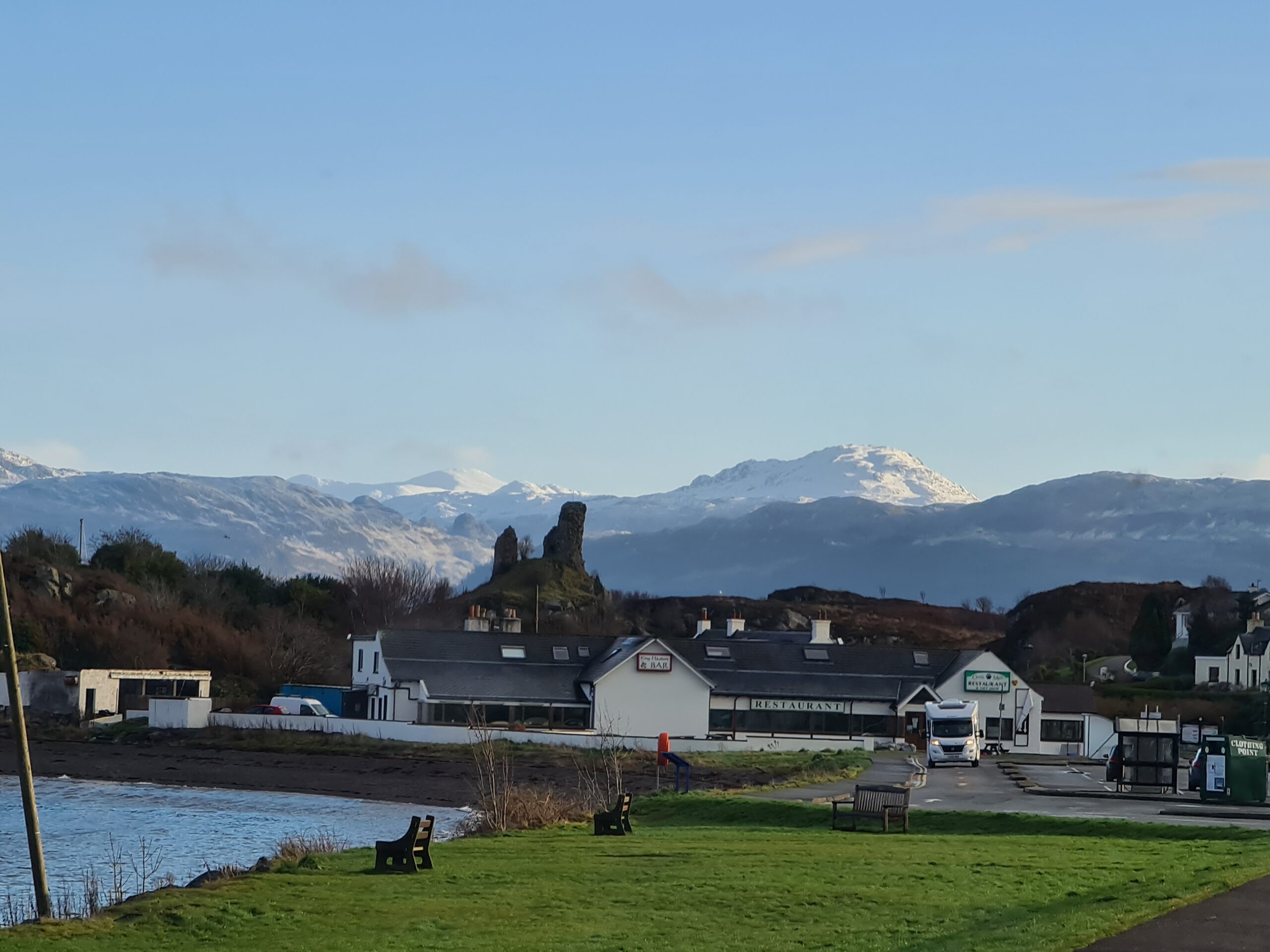Location: near Kyleakin, Isle of Skye, Inner Hebrides, Highlands of Scotland
kind of castle: 15th-century fortress with a rectangular keep
today: ruined condition, can be explored by visitors
public transport: daily CityLink Services from Inverness and Fort William to Portree/Uig stop at Kyleakin, Castle is a short walk from there
scheduled monument: yes
managed by: Highland Council
entrance fee: £ 0
opening times: 24/7, all year round
directions: Google Maps (footpath from Kyleakin)

Caisteal Maol is often confused with Moil Castle in Argyll and Bute since some other versions of the name include Castle Moil, Castle Maol, Dun Akyn, Dunakin Castle, Dun Haakon, Castle Dunakin. Caisteal Maol is the Scottish Gaelic version and commonly used by the locals.
The currently visible ruin dates back to the 14th century, proven by carbon dating, while a fortress on the site goes back way longer. What we can still see is a ruin that was barely lived in at all if compared to other castles in the area.

Once having served as the seat of the Mackinnon clan the castle is strategically positioned to overlook the strait between Mainland Scotland and the Isle of Skye, also known as Kyle Akin. The location definitely was chosen very carefully since this meant money for the clan, ships had to pass through the strait and were charged for it. This is where the story about ‘Saucy Mary’ comes into mind, the story is way older than the ruin of Caisteal Maol which is still visible today and it strongly supports the thought of there having been a way older castle on the sight before the current one was erected.
According to locally believed stories a Norwegian princess married Findanus the 4th MacKinnon chief some time around 900. It was thought that this norse princess “Mary” was the first to run chains through the kyle to stop passing ships and collect a toll from them. ‘Saucy Mary’ got this name because she was said to show parts of her naked body to the passing ships.
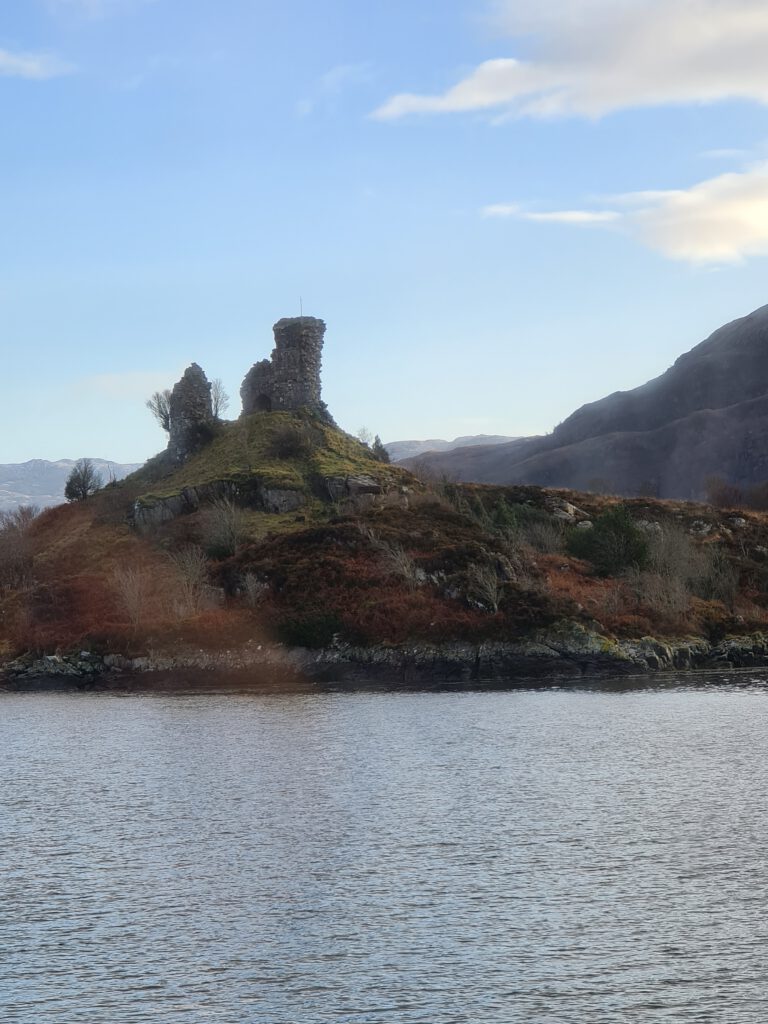
Some of the castle’s nicknames, mentioned in medieval and early modern records as Dunakin (Dun Haakon) date back to the 13th-century just like the name of the kyle originating from ‘akin’ after King Haakon IV or Norway. King Haakon sailed through the kyle and probably past an earlier structure of Caisteal Maol, in 1263 on his way to defeat at the Battle of Largs, the famous battle which once and for all decided the ownership of the Hebrides to be Scottish!
In 1513 Caisteal Maol was the location of a well-known meeting between a couple of clan chiefs, it was then that they announced their support for Donald MacDonald as Lord of the Isles, a title that later on caused a lot of disturbances throughout the Scottish Highlands. However, it didn’t really affect the castle for too long since its last occupant was Neill MacKinnon who was the nephew of the 26th chief of the clan, only until 1601. It is most likely that no one made an effort to inhabit the castle afterwards since there were stronger castles surrounding it (such as Eilean Donan Castle) and most of them definitely more comfortable than the three-storey tower that once was Caste Moil.
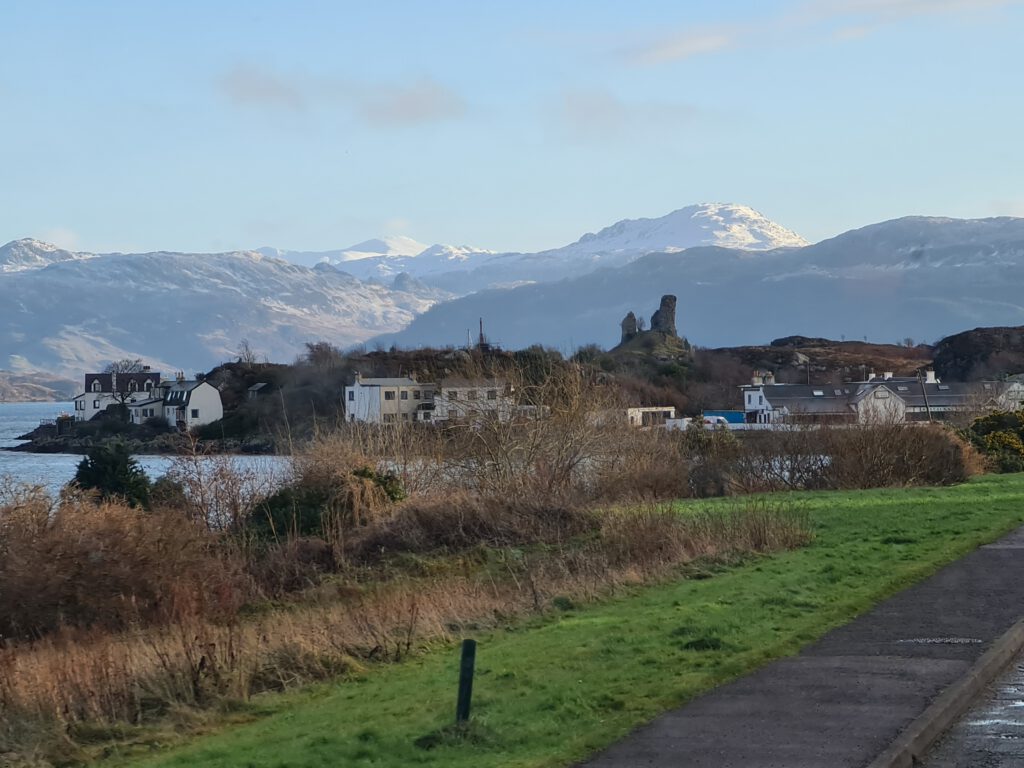
It is not to be said for sure in which year exactly the last occupant left the castle, but what can be said for sure is that there was a fire, which might have forced them to leave. By 1652 records state that the castle was roofless and abandoned. If being burned as an act of war or everything being an accident, there is no way to tell that now and it leaves one wondering.
What we can still see today is two storeys of the castle, the basement of which is filled up with rubble and can’t be accessed, however it is thought to have contained the kitchen, the first floor having been on ground level, containing the public dining space and the third floor the private apartments.
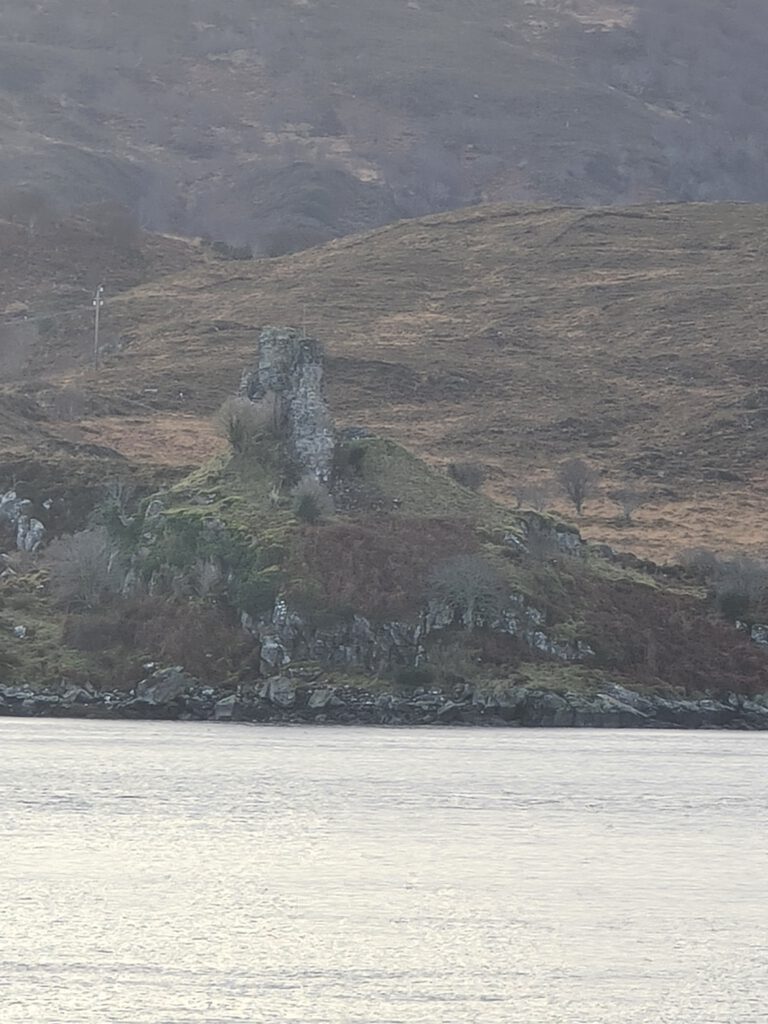
The floors back than most likely being made of timber didn’t survive the fire and further destruction of the castle followed in the 20th-century when in 1949 and 1989 part broke away in storms, leaving only part of the castle before in 2018 lightning struck and destroyed further parts of the ruins. After the lightning strike the Highland Council along with several other organisations worked on securing the ruins, however, you should still be careful when visiting the ruin.
Though you can only see remains of the tower today, what once must have been there, but of which are no traces left is the service buildings which must have been located around the former tower house formed castle.
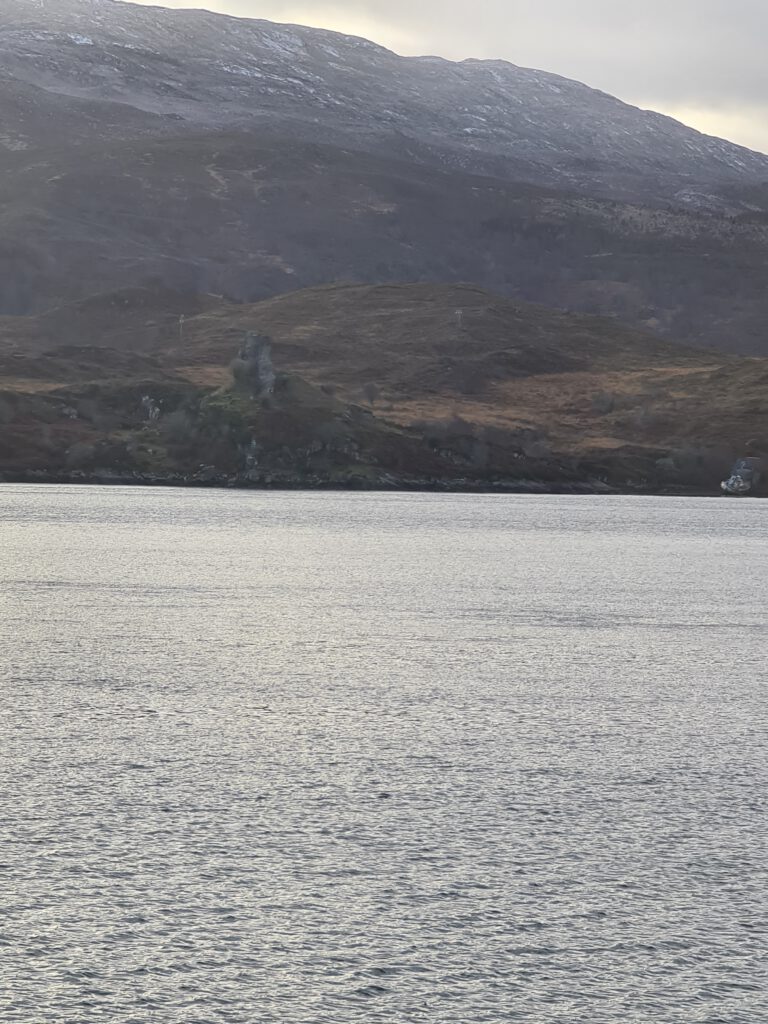
Definitely a place worth visiting, although I have to say I only saw from the tour bus we took through the area, I regret not getting a closer look since the ruins somehow intrigued me and been on my mind ever since. They might be smaller than castles like Eilean Donan etc. but they have a lot of history still. What is special about the smaller places is that except the historical very important facts there is not much knowledge about the past left, which leaves one wondering what has been and this part of imagining is maybe the most interesting part of visiting a strongly ruined place.
